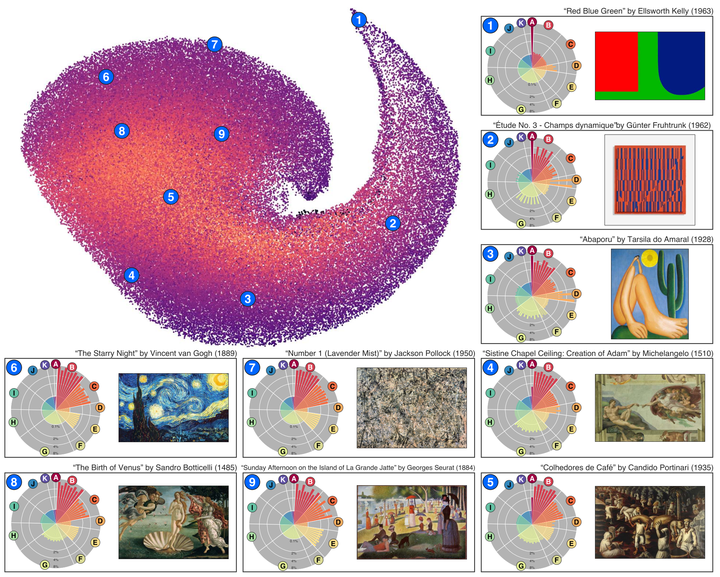
Abstract
Quantitative analysis of visual arts has recently expanded to encompass a more extensive array of artworks due to the availability of large-scale digitized art collections. Consistent with formal analyses by art historians, many of these studies highlight the significance of encoding spatial structures within artworks to enhance our understanding of visual arts. However, defining universally applicable, interpretable, and sufficiently simple units that capture the essence of paintings and their artistic styles remains challenging. Here we examine ordering patterns in pixel intensities within two-by-two partitions of images from nearly 140,000 paintings created over the past thousand years. These patterns, categorized into eleven types based on arguments of continuity and symmetry, are both universally applicable and detailed enough to correlate with low-level visual features of paintings. We uncover a universal distribution of these patterns, with consistent prevalence within groups, yet modulated across groups by a nontrivial interplay between pattern smoothness and the likelihood of identical pixel intensities. This finding provides a standardized metric for comparing paintings and styles, further establishing a scale to measure deviations from the average prevalence. Our research also shows that these simple patterns carry valuable information for identifying painting styles, though styles generally exhibit considerable variability in the prevalence of ordinal patterns. Moreover, shifts in the prevalence of these patterns reveal a trend in which artworks increasingly diverge from the average incidence over time; however, this evolution is neither smooth nor uniform, with substantial variability in pattern prevalence, particularly after the 1930s.